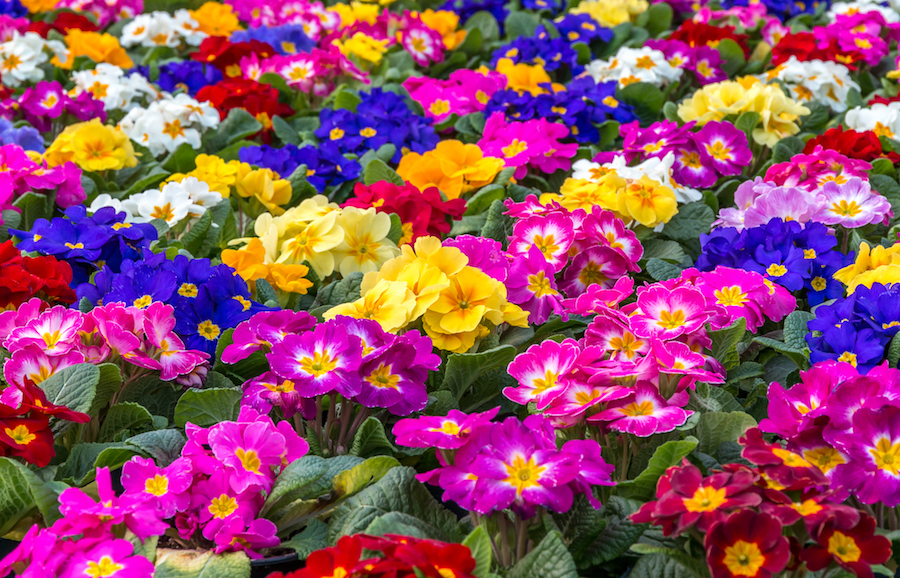How to grow the perfect primulas
Our guide to growing perfect primulas and how to make the most of these colourful plants
They are flowering their hearts out at this time of year in all colours of the rainbow. Hannah Stephenson offers tips on how to get the best out of primulas.
These pint-sized beauties are currently everywhere, in window boxes and containers, or poking their colourful heads out at the front of borders and in woodlands.

Purple flowers of Primula denticulata
There are so many different types of primulas, it’s difficult to choose which ones to go for. There are taller varieties such as the lollipop-shaped flowers of Primula denticulata, which come out a bit later, or the traditional, more familiar types such as the primrose and the cowslip.
They are really easy to grow, flourishing in virtually any situation provided they are planted in rich soil, although cowslips favour free-draining soil and the Asiatic types provide a riot of colour in heavy soil.
Would you know these were primulas?

Primula vialii
They look more like miniature red hot pokers. Primula vialii have unusual flower spikes with light purple flowers opening from the red buds at the base first. These upright beauties prefer acidic soil in damp locations.

Primula bulleyana
Others, known as candelabra primulas, are more upright, with flowers appearing in tiered circles around the stems, above clumps of soft green leaves. Then there are the sieboldii hybrids from Japan, with their delicate-looking flowers which look lovely in pots and flower a little later in May or June.
Create a spring mix display

Heucheras make a good foil for primulas
Good plant partners for traditional Primula vulgaris include burgundy-leaved heuchera such as ‘Amethyst Myst’, violas, hellebores and daffodils such as N. ‘February Gold’.
Dig over a border, incorporating plenty of organic matter and if the soil is really heavy, add some horticultural grit. If you didn’t plant your bulbs in autumn you can buy them in containers now ready for planting as they are about to come into flower.
Fill in gaps with bedding pansies and primulas and keep everything well watered initially until they are established, deadheading regularly as the flowers fade.

Primula japonica
If you want to go for slightly taller candelabra primroses, put them with meconopsis or azaleas, where the soil is also suitable, or let the elegant flowers add colourful highlights to clumps of hostas.
Select combinations that work in a pot

Choose plant partners such as daffodils
Select your primulas in colours that complement both the container and the locations. Highlight low-growing colourful plants by adding a focal point to the group such as an ornamental grass in the centre.
For scented highlights, team Primula vulgaris with Narcissus ‘Jetfire’, a bright yellow variety with an orange trumpet which goes well with the deep green leaves of Skimmia x confusa ‘Kew Green’, which bears creamy-white flowers. You may want to add a small trailing ivy to drape over the side.
Make more plants
Primulas are easy to propagate to give you more plants in future years. Once they’ve finished flowering, simply dig them up making sure you don’t damage the roots, prise the clumps apart and replant them with plenty of rich compost.
The Press Association
Latest posts by The Press Association (see all)
- World Penguin Day: Test your knowledge with our penguin-themed quiz - April 23, 2024
- Kate’s new photo of Louis released to celebrate prince’s sixth birthday - April 23, 2024
- Alan Titchmarsh: Slugs are never going to be my friends - April 23, 2024
- Prince Louis celebrates sixth birthday - April 23, 2024
- Special episode of Planet Earth III to be narrated by schoolchildren - April 22, 2024






















